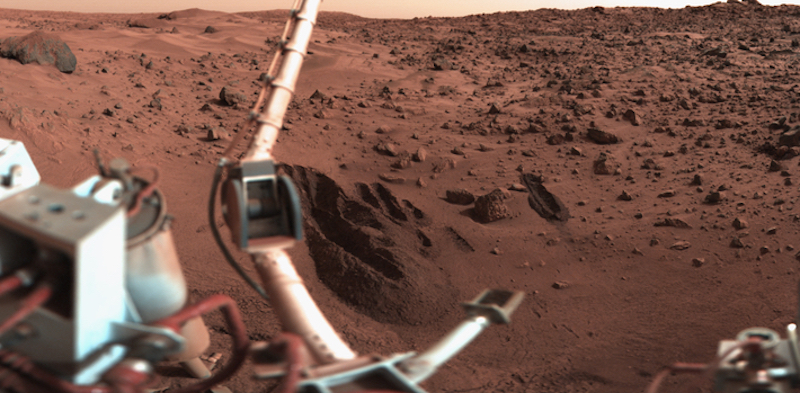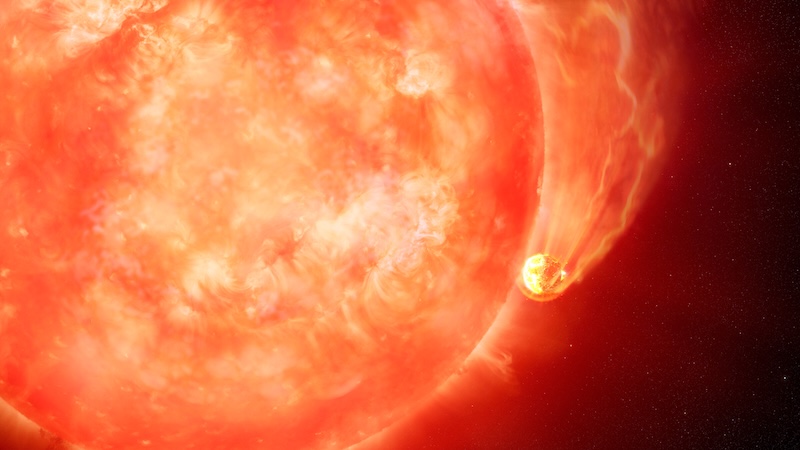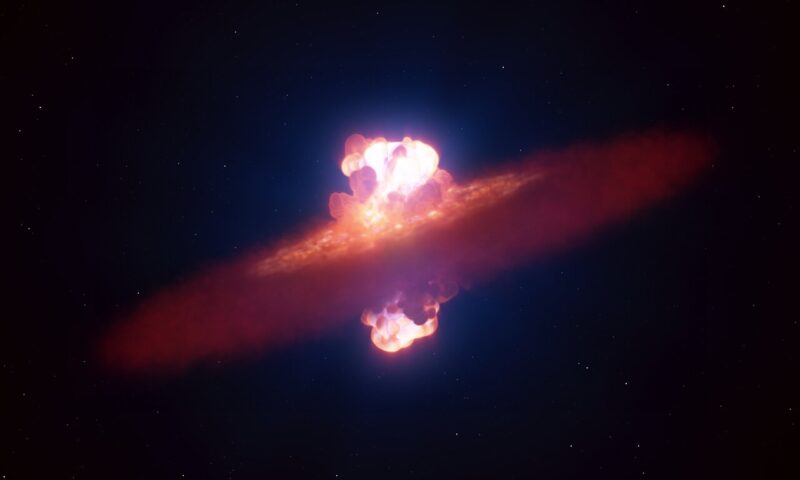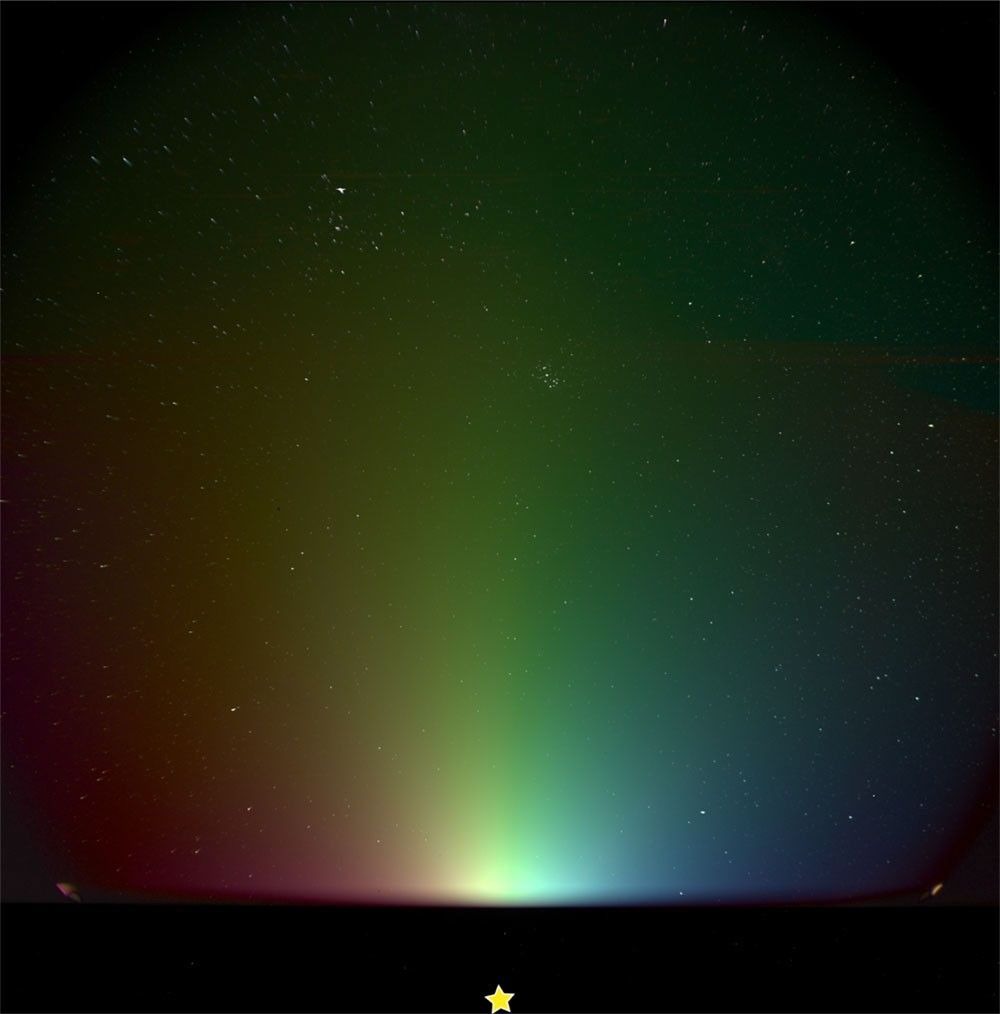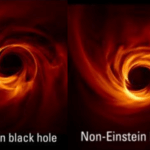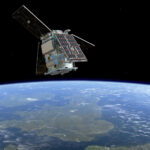Now Reading: Jupiter and Io: New insights into stormy, volcanic worlds
-
01
Jupiter and Io: New insights into stormy, volcanic worlds
Jupiter and Io: New insights into stormy, volcanic worlds
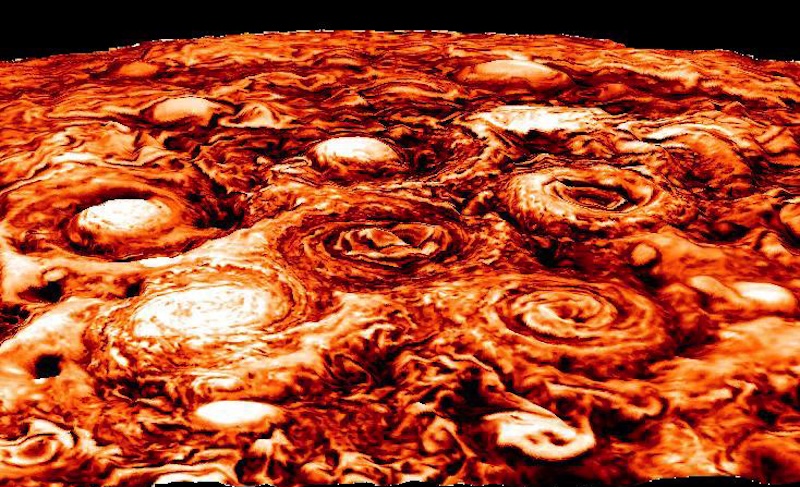

Science matters. Wonder matters. You matter. Join our 2025 Donation Campaign today.
- Jupiter and its moon Io are two of the most active worlds in our solar system. Jupiter’s atmosphere rages with massive cyclones and jet stream winds. Io is the most volcanically active body in the solar system, with hundreds of active volcanoes dotting its surface.
- NASA’s Juno orbiter peeked below Jupiter’s atmosphere and Io’s surface. What did it find?
- Jupiter’s cyclones, clustered around its north pole, behave similar to hurricanes on Earth, but on a much larger scale. Io has warm magma below about 10% of its cooler crust.
New insights into Jupiter and Io
The giant planet Jupiter and its volcanic moon Io are two of the most dynamic and extreme places in the solar system. Jupiter’s deep atmosphere churns with massive, powerful jet streams and cyclones that dwarf any storms on Earth. Io is the most volcanically active body in the entire solar system, with hundreds of active sulfur volcanoes. Now, NASA’s Juno orbiter has taken a closer look beneath Jupiter’s turbulent clouds and Io’s fiery surface. NASA said on April 29, 2025, that the findings provide new clues about Jupiter’s jet streams and storms, and Io’s structure and volcanic activity below its surface.
The researchers presented the new results at the European Geosciences Union General Assembly in Vienna, Austria, on April 29.
Jupiter, a fierce and extreme world
Jupiter is often referred to as the “king of the planets.” And as might be expected, its fierce and extreme behavior matches its size. Scott Bolton is the principal investigator of Juno at the Southwest Research Institute in San Antonio, Texas. He said:
Everything about Jupiter is extreme. The planet is home to gigantic polar cyclones bigger than Australia, fierce jet streams, the most volcanic body in our solar system, the most powerful aurora and the harshest radiation belts. As Juno’s orbit takes us to new regions of Jupiter’s complex system, we’re getting a closer look at the immensity of energy this gas giant wields.

Tracking Jupiter’s massive cyclones
Unlike storms on Earth, Jupiter’s storms tend to last much, much longer. The Great Red Spot is a perfect example of this, surviving for hundreds of years, although it is now shrinking. Some of the most jaw-dropping storms are the cluster of huge cyclones that encircle Jupiter’s north pole. A massive central cyclone is surrounded by multiple others. Although they drift slightly, they remain confined to this region around the pole. The cyclones, in turn, are encircled by a powerful jet stream.
Juno watched the cyclones as it orbited Jupiter. Each storm drifts slowly closer to the pole. This is similar to how cyclones and hurricanes on Earth migrate. Scientists call this beta drift. Basically, it is the interaction between the Coriolis force and the cyclone’s circular wind pattern. On Earth, however, these storms will break up and dissipate as they run out of warm, moist air. You can see this happen as a hurricane starts to move over land.
But on Jupiter, there are no land masses to interfere with the cyclones’ movement. The cyclones cluster together and their interaction causes them to gradually slow down and “bounce” off one another. Co-investigator Yohai Kaspi, at the Weizmann Institute of Science in Israel, explained:
These competing forces result in the cyclones ‘bouncing’ off one another in a manner reminiscent of springs in a mechanical system. This interaction not only stabilizes the entire configuration, but also causes the cyclones to oscillate around their central positions, as they slowly drift westward, clockwise, around the pole.
Io, moon of Jupiter, from the Juno spacecraft on May 6, 2025. The night side can be seen in reflected light from the planet.
— Ted Stryk (@tedstryk.bsky.social) 2025-05-09T17:49:56.039Z
Measuring the temperature of Jupiter’s atmosphere
In addition, Juno also used radio waves to measure the temperatures in Jupiter’s atmosphere. It began these experiments during its 53rd orbit of the giant planet, on February 18, 2023. Juno used a technique called radio occultation. How did it work? The mission team back on Earth sent a radio signal to Juno. Then, Juno returned a signal back to Earth. Both signals passed through Jupiter’s atmosphere. Consequently, the atmosphere bent, or refracted, those signals. By measuring the amount of refraction, scientists could obtain data about both the temperature and density of the atmosphere.
To date, Juno has now performed radio occultations 26 times. They show the stratospheric cap over Jupiter’s north pole is about 11 degrees Celsius (20 F) cooler than the surrounding atmosphere. (Jupiter has a stratosphere, like Earth does.) The cap is surrounded by winds that reach over 100 mph (161 kph).
Looking beneath Io’s volcanoes
Io’s surface is dotted with hundreds of sulfur volcanoes. There are multiple eruptions occurring at any given time, coating the surface in colorful flows of lava and plume deposits. In fact, the moon kind of looks like a giant pizza. But what about beneath the surface?
Juno used its microwave radiometer (MWR) and Jovian Infrared Auroral Mapper (JIRAM) instruments to peek below the roiling surface. They found magma that was still warm beneath the cooler crust. Io only has an extremely tenuous atmosphere, so the crust cools down in the near-vacuum of space. The magma deposits are below about 10% of Io’s surface. Juno scientist Shannon Brown at NASA’s Jet Propulsion Laboratory in Southern California said:
The Juno science team loves to combine very different datasets from very different instruments and see what we can learn. When we incorporated the MWR data with JIRAM’s infrared imagery, we were surprised by what we saw: evidence of still-warm magma that hasn’t yet solidified below Io’s cooled crust. At every latitude and longitude, there were cooling lava flows.
Io’s volcanos, lava fields and subterranean lava flows act like a car radiator, efficiently moving heat from the interior to the surface, cooling itself down in the vacuum of space.
South polar region of Jupiter’s moon Io during Juno flyby on December 27, 2024. Video via NASA/ JPL/ SwRI/ ASI – JIRAM Team (A.M.)/ SciTech Daily.
Biggest eruption on Io seen so far
Juno also looked again at an as-yet unnamed volcano that produced the biggest eruption seen so far on Io. Juno witnessed the massive eruption of magma and ash on December 27, 2024.
That eruption was still underway at least as recently as March 2, 2025.
Going where no spacecraft has gone before
Juno’s mission is one of continuous discovery. As Bolton summed it up:
One of the great things about Juno is its orbit is ever-changing, which means we get a new vantage point each time as we perform a science flyby. In the extended mission, that means we’re continuing to go where no spacecraft has gone before, including spending more time in the strongest planetary radiation belts in the solar system. It’s a little scary, but we’ve built Juno like a tank and are learning more about this intense environment each time we go through it.
In addition to the Juno observations, NASA’s James Webb Space Telescope also recently saw more of Jupiter’s auroras. Watch here!

Bottom line: NASA’s Juno orbiter has taken an in-depth look at Jupiter and Io, revealing what they are like beneath their turbulent atmosphere and fiery surface.
Read more: Ammonia-water mushballs raining on Jupiter, says new theory
Read more: Jupiter’s moon Io has a new volcano! See pics here
The post Jupiter and Io: New insights into stormy, volcanic worlds first appeared on EarthSky.
Stay Informed With the Latest & Most Important News
Previous Post
Next Post
-
 012024 in Review: Highlights from NASA in Silicon Valley
012024 in Review: Highlights from NASA in Silicon Valley -
 02Panasonic Leica Summilux DG 15mm f/1.7 ASPH review
02Panasonic Leica Summilux DG 15mm f/1.7 ASPH review -
 03How New NASA, India Earth Satellite NISAR Will See Earth
03How New NASA, India Earth Satellite NISAR Will See Earth -
 04And Thus Begins A New Year For Life On Earth
04And Thus Begins A New Year For Life On Earth -
 05Astronomy Activation Ambassadors: A New Era
05Astronomy Activation Ambassadors: A New Era -
06SpaceX launch surge helps set new global launch record in 2024
-
 07Space Force plans new ‘Futures Command’ amid pressure to speed up modernization
07Space Force plans new ‘Futures Command’ amid pressure to speed up modernization












